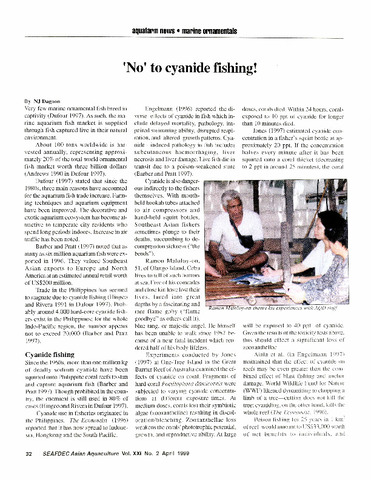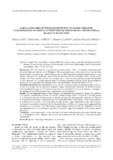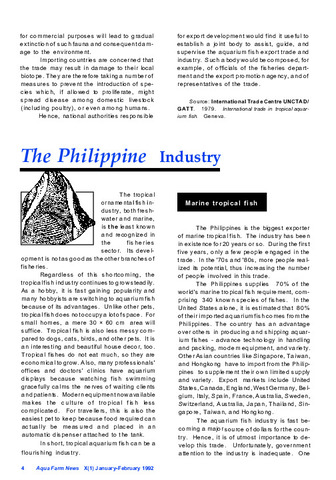Hormone-induced spawning of cultured tropical finfishes
- Global styles
- MLA
- Vancouver
- Elsevier - Harvard
- APA
- Help

Download URL
archimer.ifremer.frDate
1990Author
Page views
2,969ASFA keyword
Metadata
Show full item record
Share
Abstract
Commercially important tropical freshwater and marine finfishes are commonly spawned with pituitary homogenate, human chorionic gonadotropin (HCG) and semi-purified fish gonadotropins. These preparations are often administered in two doses, a lower priming dose followed a few hours later by a higher resolving dose. Interval between the first and second injections may vary from 3 - 24 hours depending on the species. Variable doses are used even for the same species and may be due to variable potencies of the gonadotropin preparations.
Synthetic analogues of luteinizing hormone-releasing hormone (LHRHa) are becoming widely used for inducing ovulation and spawning in a variety of teleosts. For marine species such as milkfish, mullet, sea bass, and rabbitfish, a single LHRHa injection or pellet implant appears to be effective. Multiple spawnings of sea bass have also been obtained following a single injection or pellet implant of a high dose of LHRHa. In a number of freshwater fishes such as the cyprinids, LHRHa alone however has limited efficacy. Standardized methods using LHRHa together with the dopamine antagonists pimozide, domperidone and reserpine have been developed for various species of carps. The technique may also be applicable for spawning marine teleosts that may not respond to LHRHa alone or where a high dose of the peptide is required.
Although natural spawning is the preferred method for breeding cultivated fish, induced spawning may be necessary to control timing and synchrony of egg production for practical reasons.
Suggested Citation
Marte, C. L. (1990). Hormone-induced spawning of cultured tropical finfishes. In Advances in tropical aquaculture : workshop at Tahiti, French Polynesia, February 20-March 4, 1989 (pp. 519–539). Plouzane, France: IFREMER.
Type
Conference paperCollections
- Conference Proceedings [299]
Related items
Showing items related by title, author, creator and subject.
-
'No' to cyanide fishing!
Dagoon, N. J. (Aquaculture Department, Southeast Asian Fisheries Development Center, 1999) -
Larval and early juvenile development of silver therapon, Leiopotherapon plumbeus (Actinopterygii: Perciformes: Terapontidae), reared in mesocosms
Aya, Frolan ; Corpuz, Mark Nell C.; Laron, Manuel A.; Garcia, Luis Maria
; Corpuz, Mark Nell C.; Laron, Manuel A.; Garcia, Luis Maria  (Szczecińskie Towarzystwo Naukowe, 2017)
The silver therapon, Leiopotherapon plumbeus (Kner, 1864), is an endemic and economically important freshwater food fish in the Philippines. The natural populations of this species have been declining during the past years, ...
(Szczecińskie Towarzystwo Naukowe, 2017)
The silver therapon, Leiopotherapon plumbeus (Kner, 1864), is an endemic and economically important freshwater food fish in the Philippines. The natural populations of this species have been declining during the past years, ... -
The Philippine industry: Marine tropical fish
Castaños, Milagros T.; Southeast Asian Fisheries Development Center, Aquaculture Department (Aquaculture Department, Southeast Asian Fisheries Development Center, 1992)




